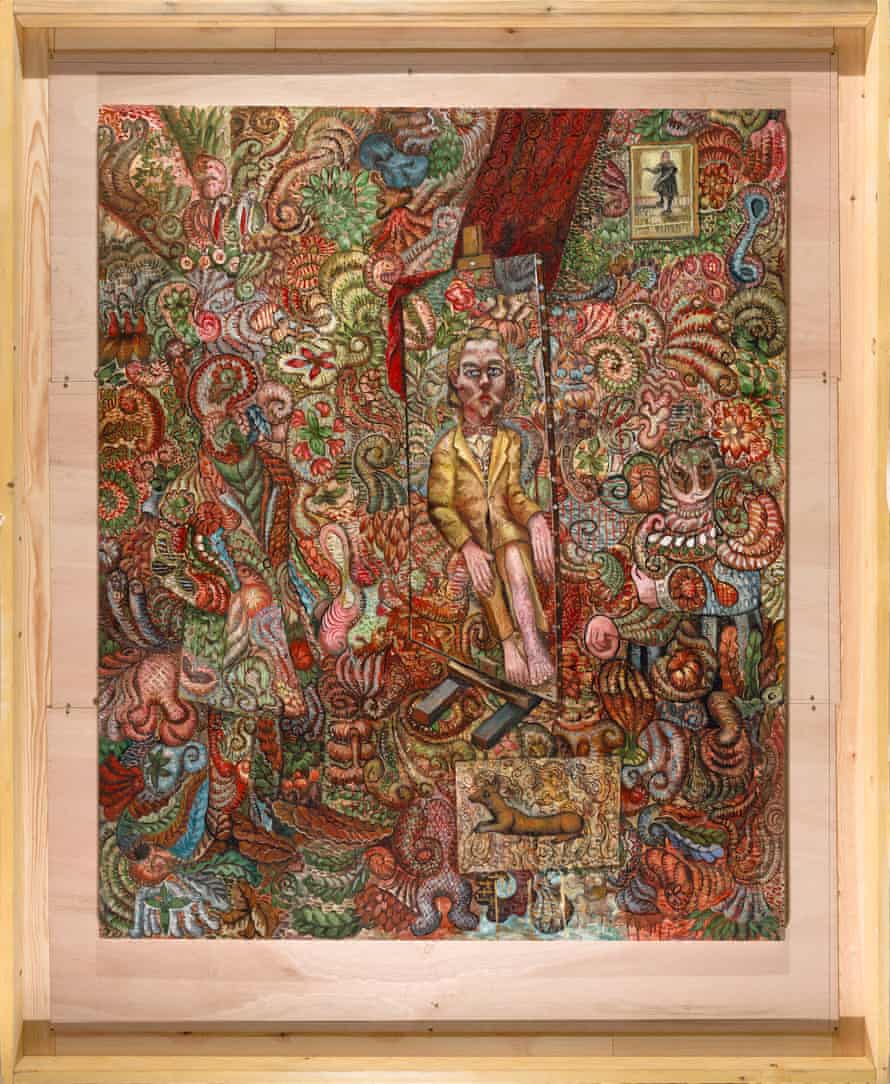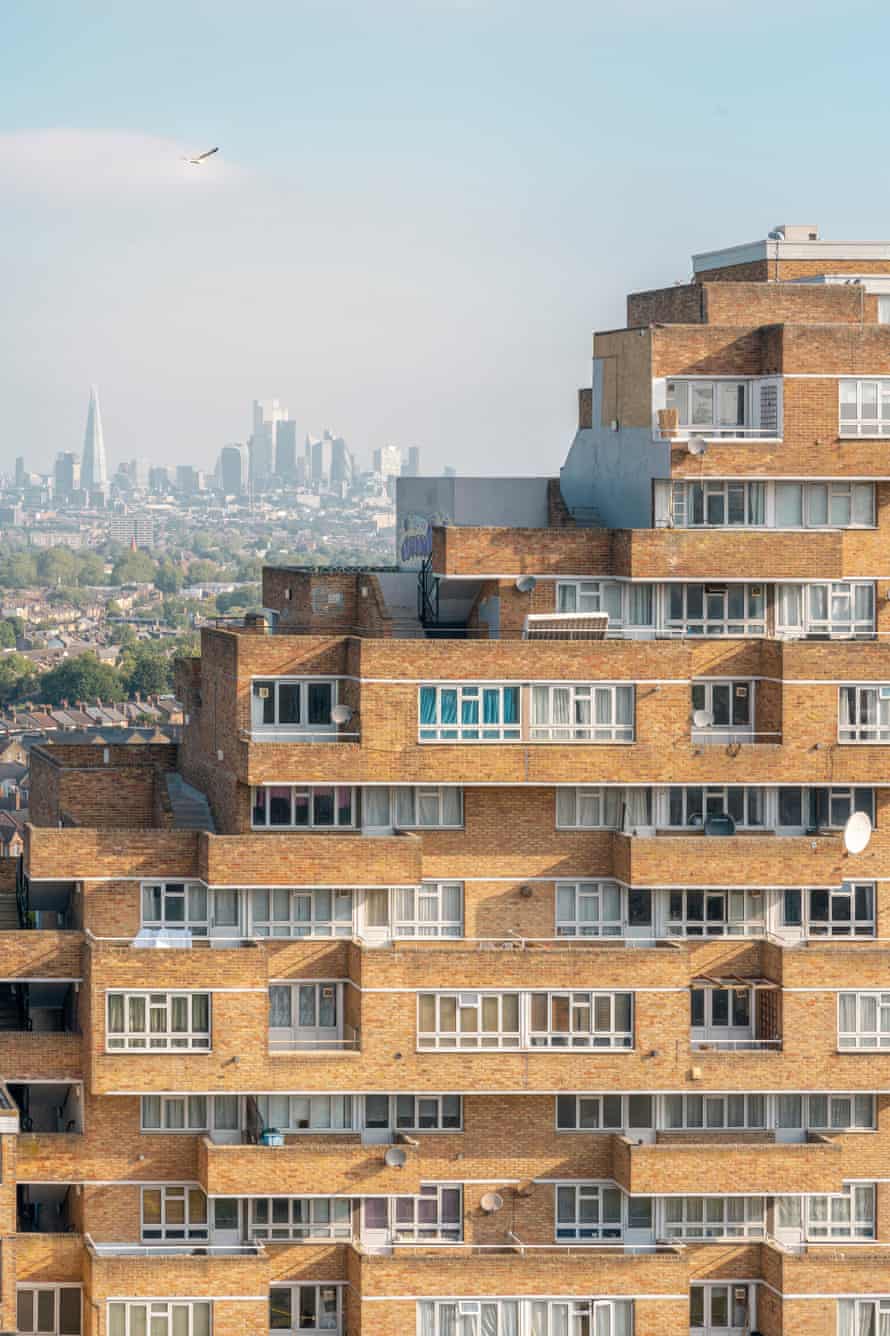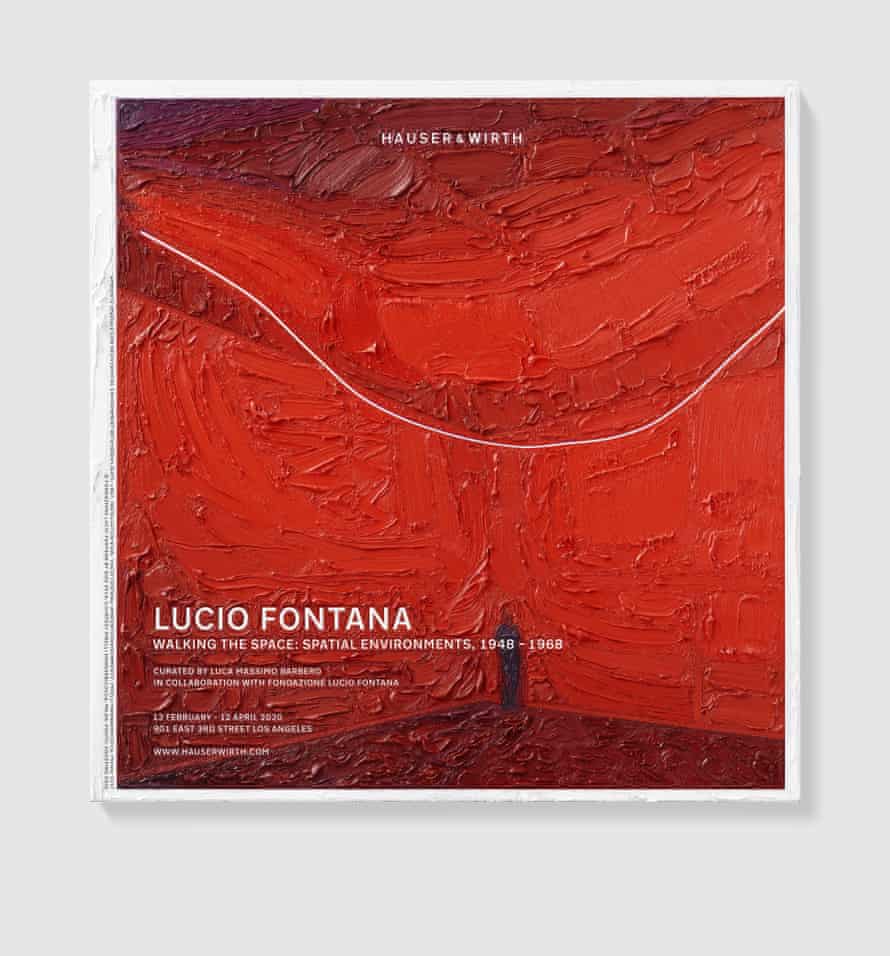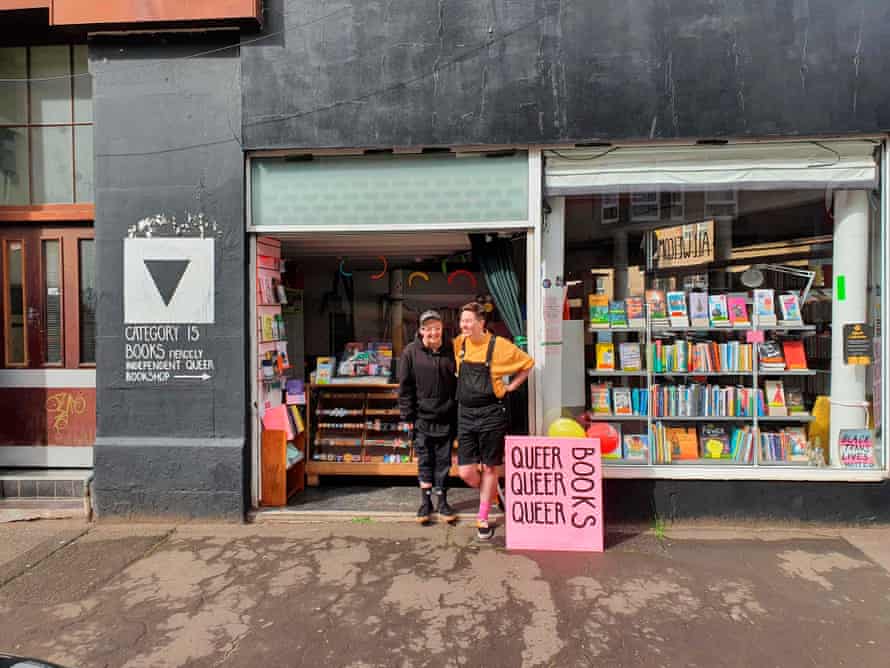
March design news: celebrating council houses and the vulva spaceship | Design
In their introduction to the new book Queer Spaces, An Atlas of LGBTIQ+ Places, author Olivia Laing describes queer space: “It’s not just a physical building to hook up or hang out. Instead it’s an alternate universe, a secret network that runs right around the world.” The idea of a world where you’re allowed to write the rules and experiment is one that many creatives relate to.
In his art book The Council House, photographer Jack Young celebrates the estates that sprung up in London in the idealist post-war era. His contemporary photographs showcase the remarkable architecture of these homes, reminding you of the good intentions behind social planning.
Finally, if you want to find an alternate way to see the universe, sign the petition to get the vulva spaceship into development. A German feminist group is determined to replace the aerodynamically inferior phallic rocket with this new design. Because even in space, equality matters.
Definitely a space where no man has gone before.
For more news on architecture, sustainable living, art, fashion and new ideas, sign up for our monthly newsletter here
The art of fine dressing

Artist Steven Campbell always loved clothes. During his studies at Glasgow School of Art in the late 70s, he’d buy a suit each week from Oxfam, wear it to paint, to the pub, to lectures, then throw it away and buy a new one the following Monday. He was fascinated by performance artists such as Gilbert & George and Bruce McLean.
Even when painting became his passion – winning him a Fulbright scholarship to New York’s Pratt Institute in 1982 – his vivid works teemed with clothes and sartorial persona. Over the years, his inspirations included film noir, Bram Stoker’s Dracula, PG Wodehouse, Pinocchio and film director David Lynch. His own appearance remained eye-catching, as his Glasgow art tutor Sandy Moffat once wrote of Campbell, he was “a flamboyant figure, often outlandishly attired, [who] looked as if he had arrived from the Paris or Vienna of the late 19th century”.
Campbell was a celebrated painter in 80s New York, where he lived with his wife, Carol – who worked for sculptor Isamu Noguchi – then part of the Scottish art renaissance (known as the New Glasgow Boys, which he hated) when he returned to his homeland. He died far too young, aged 54 of a ruptured appendix in 2007.
New exhibition Dressing Above Your Station looks at the importance of fashion and textiles in Campbell’s work, including his own wardrobe replete with his Comme des Garçons collection, accepted as payment for one of his paintings during his New York days.
This virtual exhibition is curated by fashion designer and co-founder of label Atelier EB Beca Lipscombe and art historian Mairi MacKenzie, two Scottish creatives who relate to Campbell’s desire to make a statement. “The exhibition looks at the role of clothing in Steven and his wife Carol’s life and aspirations,” says Lipscombe. “The importance of leaving and returning home to their sartorial biographies, and what it feels to stick out like a sore thumb in Scotland.”
It’s also a good chance to remember the work of a great painter.
Dressing Above Your Station, is a virtual exhibition which can also be seen as projections in the windows of Tramway Museum and shop windows in Sauchiehall Street, Glasgow, 31 March-26 June
Extraterrestrial equality

Jeff Bezos, Elon Musk and Richard Branson blasting into space may have been a giant step for white, middle-aged billionaires, but did little to make anyone feel good about equality. As only 12{6d6906d986cb38e604952ede6d65f3d49470e23f1a526661621333fa74363c48} of space travellers have been female and woman has yet to walk on the moon, last year’s space explorers felt depressingly par for the course. But a German feminist group has a plan to change this.
Wer braucht Feminismus? (translation: “who needs feminism?”) was started as an art-based feminism project in 2012 by artist Jasmin Mittag, but has developed into a networking and grass-roots campaigning organisation in Germany. This year, WBF has teamed up with aeronautics expert Dr Lucia Hartmann to form WBF Aeronautics – a space start-up. Hartmann’s main area of research is spacecraft efficiency and she’s created a vulva-shaped craft which is more aerodynamic than the typical phallic rocket.
Hartmann says that the ship’s V-shape makes it surprisingly aerodynamic and also contributes to better fuel efficiency. “There’s less drag than on a conventional spacecraft.” She’s clear about her feminist message, too. In the promotional video for the vulva project, she wonders: “If space is for everyone, is a phallic-shaped rocket really the best way of getting there?”
WBF Aeronautics has launched a petition on change.org to get the European Space Agency to consider the vulva spaceship for development.
“With our mission, we prove that gender equality even has a place in space. We are not only inspiring space travel, but also rewriting the gender narrative,” says Mittag. “In space travel, all the problems that we have on earth are amplified. It’s time for equal opportunities in the entire universe.”
Making craft count

This month, Harewood House in Leeds opens its doors to artists seeking to answer the question Why Craft Matters. This is the theme of the second Harewood Biennial and, until August, the public can view these creatives’ attempts to address climate change or equality through craft. The Harewood Trust is trying to answer its own question about what makes a stately home relevant in the 21st century and the interesting range of artists involved in the biennial reflects how they’re trying to widen the house’s appeal.
Designer Mac Collins has designed a domino set, games table and stools, inspired by the Caribbean community’s domino-playing culture for Harewood’s Cinnamon Drawing Room. Collins describes their presence in a room full of Chippendale furniture and lined with portraits of the Lascelles family, as a combined act of material and socio-cultural representation.
Textiles artist Celia Pym has set up a “mending desk” and asked Harewood’s staff to bring a garment for her to repair, in exchange for a story of how these individuals care, repair and look after the estate.
Architectural reclamation company Retrouvius. replaces the eight leaves of the table in the State Dining Room with reclaimed materials that mirror the original Robert Adam ceiling (which was taken to the Sir John Soane’s Museum).
Smile Plastics, a Welsh company that recycles household plastic waste into building materials, as worked on a project to create a series of self-assembly, modular seating, which snakes its way around the north lawn of Harewood.
Hugo Macdonald, curator, says: “Radical Acts [Why Craft Matters] brings together an exciting group of creative activists, joined by their commitment to craft as a force for positive impact. The biennial is not so much an exhibition as a call to arms. These are stories and initiatives to inspire us all so that, as individuals, we can make conscious choices that have positive impacts. It is a radical act to take responsibility for our lifestyles and our livelihoods, and to discover that our future is in our hands.”
Harewood Biennial 2022 is at Harewood House, Leeds until 29 August
Celebrating the council house

Jack Young fell in love with London’s council housing during his lunch break. He’d explore Chamberlin, Powell and Bon’s Golden Lane Estate and the Barbican, architectural delights situated near the office where he worked as a product designer. Before long he found himself setting out at weekends to photograph developments and blocks around the capital. An instagram account was born.
He’s devoted to the post-war era, when rebuilding society felt possible and civic planners had big dreams and architects, such as Kate Macintosh and Erno Goldfinger, had a vision of providing quality houses for all. It’s the estates from this era that fill the pages of his new book, The Council House.
Though many of these buildings are now in disrepair, their inhabitants and architects more jaded about utopian ideals, Young’s images capture the best of these estates. In his introduction, he recalls how he was sometimes invited in by residents who watched bemused as he took his photos or that they would laugh at him as he obsessed over a concrete staircase. “But their pride in these estates was joyfully clear,” he writes. “It is my hope that in showcasing and championing the beauty and intelligence in these buildings, I can help to restore some of the rightful pride that was once felt in them.”
The Council House by Jack Young (Hoxton Mini Press, £18.95) is out now
Sign up to the Design Review Monthly newsletter
Sign-up of a monthly dose of creative inspiration, emailed directly to you.
Making art from Artforum

Simon Linke has a new exhibition opening in London gallery Darren Flook this week. If you’re a fan of the conceptual artist, you know that his new show will be very like his others. Since the 1980s, when Linke first found fame as an artist and as an inspiration to the YBAs, he has only painted adverts from American art magazine Artforum. Few artists have been so faithful to an inspiration: for 35 years now, his canvases, thick with oil paint, have been ads for gallery and museum shows taken from Artforum. Though in the new show – his first for 10 years – he’s added unexpected texture to the graphic designs.
On YouTube you can still find an excellent segment on Linke from revered 90s British culture TV programme The Late Show. In his interview with critic Matthew Collings Linke first gives monosyllabic answers, then interviews Collings, before finally admitting that in his work “I’ve found something that helps me negotiate the anxiety about what we can do and how we stay relevant”. And, although, looking at his work, there are good points to be made about art, repetition, commerce, history, and the influence of Freud and Warhol, this hard-won quote is still relevant all these years later.
As gallerist Darren Flook, says: “Art and commerce are now so profoundly linked, auction prices are in newspapers and pop stars show off the art they’ve bought on their instagram feeds. It’s incredible to me that in the 80s a British painter really beautifully and quietly pointed it all out. It was so conceptually tight and visually pleasurable – and now – 35 years later, he’s still making them. Like art and money or power, the dance is the same.”
Simon Linke is at Darren Flook, London, until 15 May
A history of LGBTQI+ places

“The idea that queerness requires an ecosystem to flourish helps clarify the fundamental importance of queer space,” writes Olivia Laing in the foreword to the new book Queer Spaces, An Atlas of LGBTIQ+ Places and Stories. “It’s not just a physical building to hook up or hang out. Instead it’s an alternate universe, a secret network that runs right around the world.”
It’s a great introduction to this new book by designer Adam Nathaniel Furman and architectural historian Joshua Mardell which shares the stories and philosophy of the different, ingenious places which have served as havens for LGBTIQ+ people throughout time. Though some of these essays celebrate well established institutions which identify as queer (such as bookshops and community centres), there’s also a looking-glass world here, full of Havanan ice-cream shops, Sheffield terrace houses and Spanish train journeys, inventive and secret places created by the queer community.
Designer Adam Nathaniel Furman says he hopes the book will become the resource he felt he missed as a student. “During a lonely and homophobic architectural education, there were no resources where I could find accessible histories and case-studies that showed how I was not alone, how what I was doing had a deep and rich history, full of proud individuals and incredible groups, spaces and communities creating radical spaces and ways of living.”
With Queer Spaces, he’s achieved that.
Queer Spaces, An Atlas of LBBTIQ+ Places and Stories (£40, RIBA books) is available for preorder now and published 1 May
